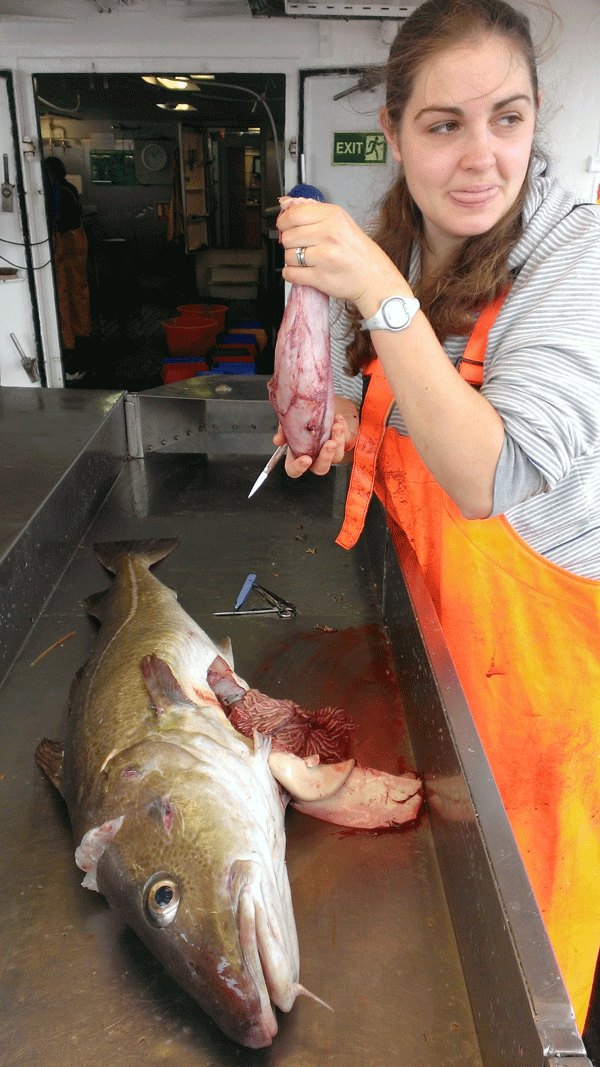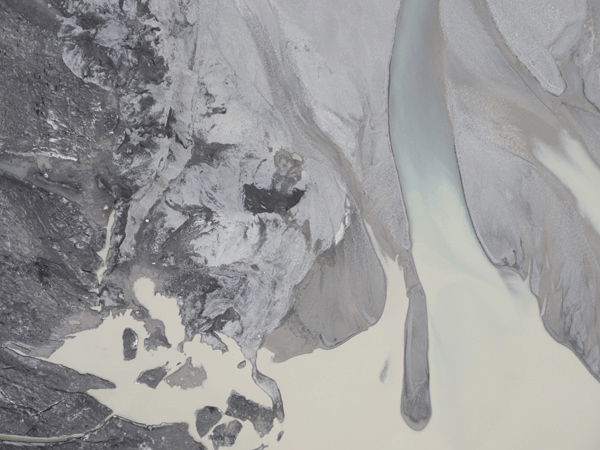<BACK TO INDEX
Me and my (fishy) NERC PhD
By Abigail Marshall - University of Sheffield
We are becoming increasingly aware thanks to the Blue Planet, media, and even Hugh Fearnley-Whittingstall, that our fisheries are in a desperate state. The decline of many stocks is startling with 75% of globally assessed fisheries classed as fished at full capacity or worse. However, it is becoming more and more apparent that fishing is not the only potentially detrimental factor influencing fish: climate impacts on marine ecosystems are physically altering fish communities.
Evidence is mounting to suggest that certain fish are shrinking and will continue to do so over the coming century with climate change. This could induce major changes in communities as ecosystems all over the world are structured by size: small species are far more abundant than large species. As soon as this structure is forced to alter, it could have significant ramifications for certain stocks.
However, trying to attribute individual drivers of change in size is a challenge. It could be related to: fishing, temperature, oxygen, food sources and seabed sedimentation. My research focuses on trying to disentangle these potential drivers of change. They are all known to be able to reduce the individual size of fish directly and indirectly, but by how much? Which is the most important one? Do top drivers vary from region to region?
Though answering these questions in my PhD predominately involves modelling and data analysis of the general ecosystem, other work into ecosystem change looks at more species-specific roles. For example, is the diet of Mackerel changing, and is this important? I had a chance to view ecosystems in this way by going to sea for 2 weeks to collect fish stomachs from the North Sea.
By looking at the stomachs of a variety of fish species, such as mackerel, hake and cod, a picture of the North Sea food web can be created. Who is eating whom? Is this changing? Most importantly, do we know why this is changing? Various European projects over the decades have collected stomach samples so changes can start to be identified.
So what next for these collected samples? The stomachs are being analysed in Germany and the Netherlands to ultimately be compared to previous data. One set of Mackerel stomachs I collected had feasted on a school of shrimp; it’s as if they knew it was their last supper…

Investigating the stomach contents of a large Gadus Morhua (Atlantic cod) caught in the northern North Sea on the Cefas Research Vessel Endeavour in August 2013. Pale peach organ is the liver; mop-like feature is the pyloric caeca, part of the digestive system. Stomach is being held.
